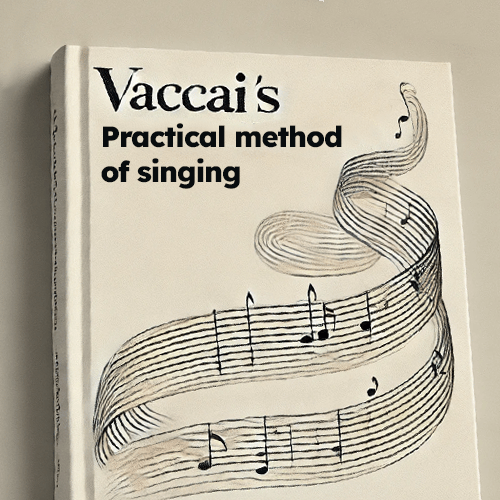
Vaccai’s Practical Method of Singing
Nicola Vaccai (1790 - 1848) was an Italian composer and singing teacher. He is particularly well-known for his work “Metodo pratico de canto”, published in 1832, which this course will take you through. Each song is carefully designed to teach a particular pedagogical concept, whether it is singing in specific intervals, or practising techniques like trills. This book is in indispensable introduction to western classical singing, and particularly singing in Italian. The lessons will take you on a step-by-step journey of mastering your voice. Vaccai exercises are integrated into popular singing examination syllabi such as that of Trinity College London.
Instant Pitch Feedback
Get immediate visual feedback on your pitch accuracy as you practice.
Flexible Learning
Learn at your own pace with on-demand lessons, free from rigid schedules.
Affordable Expertise
Access high-quality instruction at a fraction of the cost of a personal teacher.
Course Contents
Lesson 1
The Diatonic Scale (“Manca sollecita”)
Singalong
Intervals of the Third (“Semplicetta tortorella”)
Singalong
Lesson 2
Intervals of the Fourth (“Lascia il lido e il mare infido”)
Singalong
Intervals of the Fifth (“Avezzo a vivere”)
Singalong
Lesson 3
Intervals of the Sixth (“Bella prova e d’alma forte”)
Singalong
Lesson 4
Intervals of the Seventh (“Fra l’ombre un lampo solo”)
Singalong
Intervals of the Octave (“Quell’on da che ruina”)
Singalong
Lesson 5
Half-tones or Semitones (“Delira dubbiosa”)
Singalong
Lesson 6
Syncopation (“Nel contrasto amor s’accende”)
Singalong
Lesson 7
Runs and Scale-Passages (“Come il candore”)
Singalong
Lesson 8
The Appoggiatura taken from above or below (“Senza l’amabile”)
Singalong
The Acciaccatura (“Benchè di senso privo”)
Singalong
Lesson 9
The Mordent (“La gioia verace”)
Singalong
Different ways of executing the Mordent (“L’augelletto in lacci stretto”)
Singalong
Lesson 10
Introduction to the Gruppetto or Turn (“Quando accende un nobil petto”)
Singalong
The Gruppetto or Turn (“Piu non si trovano”)
Singalong
Lesson 11
Introduction of the Trill or Shake (“Se povero il ruscello”)
Singalong
Lesson 12
Runs and Scale-Passages (“Siam navi all’onde algenti”)
Singalong
Lesson 13
The Portamento (“Vorrei spiegar l’affanno”)
Singalong
2nd way of Portamento (“O placido il mare”)
Singalong
Lesson 14
Recitative (“La patria è un tutto”)
Singalong
Lesson 15
Recapitulation of all lessons (“Alla stagion dei fiori”)
Singalong
Related Courses
We use cookies to analyze site traffic and improve your experience. By clicking "Accept," you consent to our use of cookies.






